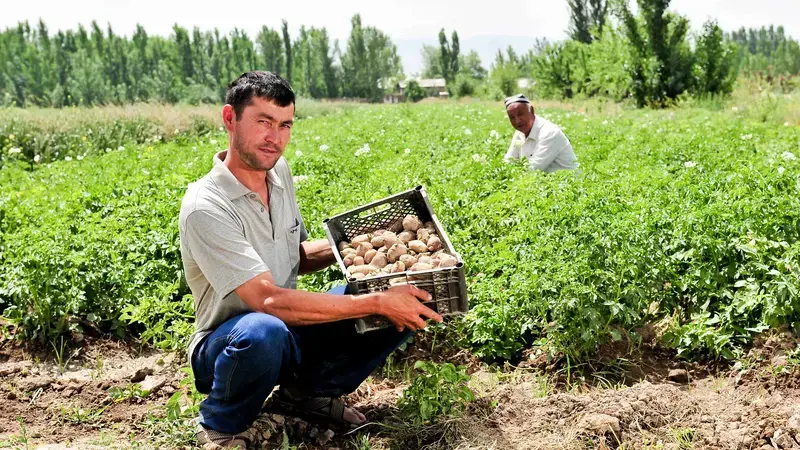A Forecast for Farm Incomes with Climate Change: the Case of Central Asia

Impacts of changing climate on agricultural production are being experienced by farmers and herders around the world. However, the question being currently debated is how big will be the overall effect of climate change on the economics of agriculture in agrarian countries?
Evidence shows that there has been a general warming trend in Central Asian countries, around 1-2°C since the beginning of the 20th century. Despite being mostly arid and semi-arid region, agriculture constitutes a main sector in the Central Asian economies.
A recent study undertaken by socio-economists at ICARDA, funded by the Asian Development Bank, assessed the impacts of climate change at the farm level in Central Asia with focus on three main crops – cotton, potatoes, and wheat. These crops are crucial for the rural economies and food security in Kazakhstan, Kyrgyzstan, Tajikistan and Uzbekistan. The analysis factored in various greenhouse gas emission scenarios to develop a model for reliable conclusive results.
The study interestingly found impacts from climate change to vary in Central Asia, not just depending on the agro-ecological zones and socio-economic aspects, but also with progression of time. For example, in the near future (2010–2040), farmers in Uzbekistan will benefit from climate change due to more favorable weather conditions for crop growth; however, in the late future (2070–2100), their revenues are expected to decline due to increasing temperatures and worsening risk of water deficit.
For Kyrgyz farmers in semi-arid zones, impact of climate change on income will be neutral in the near future but is expected to benefit them in the late future. Farmers in sub-humid zones of Kyrgyzstan will probably have higher expected income in near and late future but also face higher production risks with weather extremes. In Tajikistan, impact of climate change will be crop specific. While wheat revenues may not change in the future, cotton growing may be less lucrative due to drop in yields if current levels of management are maintained. Potato farmers may receive higher revenues in the future as yields are expected to increase.
The study findings are filling an important knowledge gap for decision-makers in Central Asia, providing evidence to rationally convince policy-makers and elicit adaptive measures to secure farm incomes.
In a powerful insight, scenario simulations with the condition of market liberalization show great potential for policies to enable producers to mitigate negative consequences of climate change, especially in Tajikistan and Uzbekistan. Another finding of this study was that more open economic policies and less rigid trade policies can be effective adaptation strategies as trade barrier may limit farmers to shift to export crops or impose production of uncompetitive crops even if they are more likely to be affected by climate change.
The study was conducted in cooperation with CGIAR’s International Food Policy Research Institute (IFPRI) and Climate Change, Agriculture and Food Security (CCAFS).
To learn more, access full article: Impacts of climate change on farm income security in Central Asia: An integrated modeling approach, Agriculture, Ecosystems and Environment, April 2014, pp 245–255.
Supported by: The Asian Development Bank
(The story appeared in dryWire December 2015 issue)
